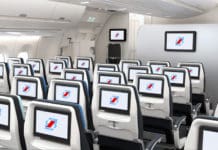
TravelingForMiles.com may receive commission from card issuers. Some or all of the card offers that appear on TravelingForMiles.com are from advertisers and may impact how and where card products appear on the site. TravelingForMiles.com does not include all card companies or all available card offers.
Some links to products and travel providers on this website will earn Traveling For Miles a commission which helps contribute to the running of the site – I’m very grateful to anyone who uses these links but their use is entirely optional. The compensation does not impact how and where products appear on this site and does not impact reviews that are published. For more details please see the advertising disclosure found at the bottom of every page.
We still don’t know for sure what caused the tragic Lion Air and Ethiopian Airlines 737 MAX 8 disasters but we do know that neither Boeing nor the Federal Aviation Administration are coming out of the investigations looking particularly good.
A little over a week ago the Seattle Times wrote an extensive article in which it discussed how the FAA delegated a lot of responsibility for the certification of the 737 MAX aircraft back to Boeing and how Boeing failed to update pilots on a workaround installed on the new aircraft which combats an issue caused by the positioning of the aircraft’s engines.
Boeing was essentially unmasked as having been less than open about how the 737 MAX worked and, based on information we now have and the ‘fixes’ that Boeing is implementing, Boeing also looks like it may have been less than meticulous in how it designed the aircraft.
All Boeing 737 MAX aircraft are currently grounded worldwide pending the results of the two air crash investigations and the BBC has now reported that the aircraft manufacturer is ready to begin upgrading the aircraft (in a number of ways) in an attempt to make it ‘even safer than before’.

The Boeing 737 MAX Upgrades
Early Warning System
Boeing will no longer charge an additional fee for an early warning system which will alert pilots when critical sensors in the aircraft’s nose are offering contradictory readings – the system will now come fitted to the 737 MAX as standard.
It’s worth noting that neither of the two aircraft involved in the recent accidents had this feature installed and there’s a chance that such a system may have prevented one or both accidents from happening.
Software Upgrade
The 737 MAX comes fitted with a Manoeuvring Characteristics Augmentation System (MCAS) which was designed to automatically move the nose of the aircraft down when a sensor in the nose detected that the aircraft was climbing too steeply and in danger of stalling.
This system is currently at the center of both air crash investigations and is what is probably causing Boeing executives quite a few sleepless nights.
- Boeing installed the system as a workaround for an issue caused by the positioning of the aircraft’s engines – rather than redesign the aircraft Boeing chose a remedial approach.
- Boeing failed to inform pilots of the existence of MCAS
- Despite the aircraft’s nose housing two sensors to detect the angle of climb it has been suggested that MCAS was only connected to one.
- MCAS was programmed to respond over an over again when it detected an aircraft climbing too steeply which, when a sole sensor is malfunctioning, may have the effect of forcing an aircraft in a perfectly safe climb to repeatedly dip its nose downwards (the suspected cause of the Lion Air disaster).

Now Boeing has issued a software update for MCAS which will….
- Make the system take readings from both sensors in the aircraft’s nose
- Disable the system if the two sensors show conflicting data
- Prevent the system from repeatedly dipping the nose of the aircraft
The software update is expected to be with the FAA by tomorrow (Friday).
Thoughts
I have just two thoughts on this news…well, they’re more questions than thoughts:
- Why was a critical safety measure offered only as an optional extra?
- How did Boeing and the FAA not realise that MCAS was inherently flawed by only being linked to one sensor and by being able to repeatedly override a pilot’s actions?
To an outsider and layperson like me this looks like a combination of cost cutting, idiocy and incredible incompetence so Boeing and the FAA have a lot of work to do to restore any form of trust in their work.
Personally I’m in no hurry to get into a 737 MAX aircraft any time soon….regardless of what ‘fixes’ Boeing installs and the clearly out-of-its depth FAA approves.
Featured image: Boeing 737 MAX 9 courtesy of Wiki Commons Media













![Earn 20,000 bonus Amex points on Air France/KLM bookings [Targeted] a row of seats in a plane](https://travelingformiles.com/wp-content/uploads/2024/03/air-france-new-business-class-2-741-356x220.jpg)


